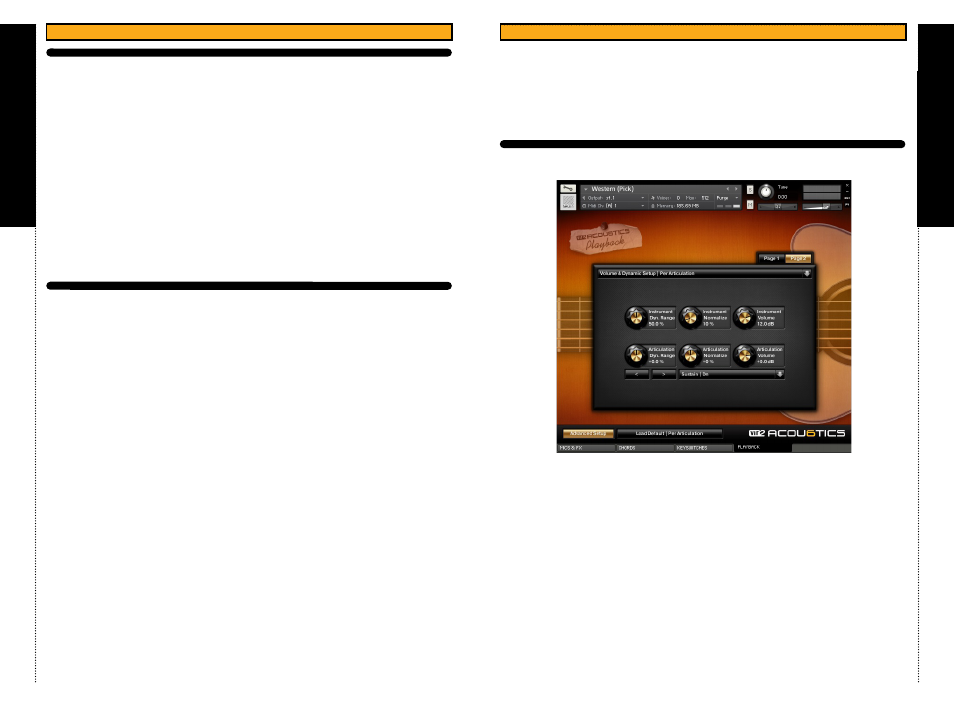Vir2 Instruments Acou6tics Manual User Manual
Page 33

a
c
ou6tics
59
c
HAP
tER 17
/ LEGA
TO SETUP
Legato Samples | transition (when played via keyswitch):
The “
fade In” parameter allows you to setup how much the new note is
crossfaded with the last note. Lower values add more attack, higher values
result in a smoother transition.
• Fade In | Hammer On / Sustain
• Fade In | Pull Off
• Fade In | Slides
The “
time” parameter allows you to setup how much of the transition
portion in the sample is played. Lower values result in a more direct
response, while higher values will add more of a glide effect.
• Time | Hammer On / Sustain
• Time | Pull Off
• Time | Slides
LEGAto SEtUP | PLAY SLIDE KEYSWItcH
Play Slide Keyswitch | Speed
The speed of a slide normally depends on the time between the first and
the second note you play to trigger the slide. With the speed setting you
can make all slides faster (1% - 100%) or all slides slower (-1% to -100%).
Speed | Min/Max
These settings allow you to limit the slide speed to a minimum and a
maximum value. If you trigger a very fast or a very slow slide, they will stay
within those limits. For example: if you play one note very shortly after a
second note, which normally would trigger a 20ms slide but you set “
Speed
Min” to 50ms, a 50ms slide will be played instead.
Speed | Accelerate (per fret)
Setup the acceleration of the the simulated finger movement here. The
default value of 5ms means that every fret you move up/down on the
fretboard when playing a up/down slide is played 5ms faster than the fret
before.
Velocity Loss | Up/Down (per fret)
These settings allows you to setup how much the velocity is automatically
decreased with each fret you slide.
cHAPtER 17
cHAPtER 18
AcoU6tIcS LEGAto SEtUP coNt’D
60
c
HAP
tER 18
/
V
OL
UME
& D
YNAMIC
SETUP
PER
AR
TICULA
TIONS
Acou
6
tics/Advanced Setup
VOLUME & DYNAMIC SETUP
PER ARTICULATIONS
V&D PER ARtIcULAtIoNS | INStRUMENt:
Instrument | Dyn. Range:
Setup the dynamic range of the instrument here. Higher values mean more
dynamic, lower values mean less dynamic.
Articulation | Dyn. Range:
Setup the amount of normalization of the samples here. 100% means that all
articulations are fully normalized and have the same volume.
Note: You’ll
lose the natural difference between the different strings and articulations
and you will need to re-adjust the volume of the individual articulations if
you set this value to high.
